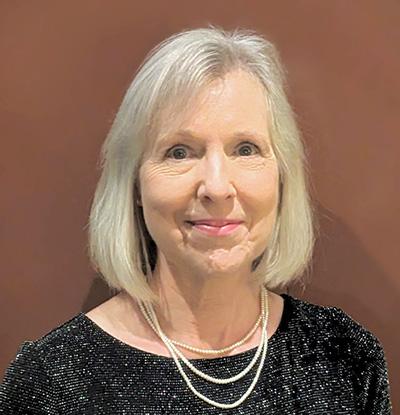As those of us who teach People Skills will be quick to tell you, the four behavior styles the program is based on exist across all ethnicities and cultures. However, as a People Skills facilitator living in Nepal, I have been challenged about the relevancy of the four behavior styles and the assessment. My eyes were opened to just how American the workshop information is and, as a result, I needed to adjust my class to acknowledge and incorporate specific cultural circumstances. At the end of the session, everyone seemed energized by the information. But I’ve learned a lot and would like to share a bit of it with you.
I think that much of what I learned is applicable to today’s American workplaces, that are filled with people from different cultures. We may assume that because someone grew up in the US or lived in the States for a long time, they are “Americanized” or have “assimilated”. Even so, they may live in extended families that are steeped in their original cultures or if not, are still deeply influenced by them. My hope is that in sharing this, we can increase our awareness of how US-oriented we can be as leaders, colleagues, and facilitators, and be a little more curious and open to learning how those brought up in other cultures experience and see things. As we learn in People Skills, we don’t all think the same way.
My workshops included nationalities other than Nepali, but apart from Americans, most of the participants were from Asian countries. Here are some of the questions and comments I received in my classes:
“The four behavior styles are based on Western research, correct? How can something grounded in Western culture be applicable to us here in South Asia?”
For this question, I acknowledged that the information is based on research from Jung, William Marston, Merrill, Reed, and more – all Western psychologists and sociologists. But I could also point out that Levi Strauss, the famed anthropologist, identified four main archetypes in all primitive societies – the Ruler, the Story-Teller, the Care-Giver, and the Problem-Solver – which correspond to the four behavior styles. In addition, many Eastern cultures acknowledge the influence of the four classical elements (earth, air, fire, water) on our lives.
“We rely on astrologers to tell us when to get married and to whom. Would this information contradict them or support them? What if it contradicts it?”
I said I hoped they could use both sets of information now that they knew about behavior styles, and they all laughed and agreed.
The As I See Myself assessment itself was a bit of a cultural challenge. Because my clients spoke English at varying levels, the assessment was translated into Nepali which, according to the translator, contained some words that are not present in Nepali. Most workshop participants opted for the English-language version, but I still was asked the meaning of some words, such as “initiative”, which I carefully tried to explain.
When taking the behavior styles assessment, the participant is first instructed to check “Work” or “Personal” to designate from which perspective they will answer the assessment questions. To Americans, “Personal” means how they act with people at home and with their friends. To many Nepali women, how they act at home and with their friends is completely different. I was told that they are more “themselves” at work and with their friends. In Nepal, once women marry, they join their husband’s family and usually live with their in-laws. They may be treated as ‘second-class citizens’ and are subject to their mothers-in-law’s dictates. At home, they have to change their behavior to be compliant with their in-laws’ expectations. The women almost all checked “Work” on the assessment, analogous to “Personal” for them. The Nepali men felt comfortable checking either one.
I discovered the level of analytical and math instruction in the Nepali school system that my clients were subjected to was probably lacking in how to create and interpret bar and line graphs. We had to spend quite a bit of time in these areas and together, we learned a lot that People Skills was not intended to teach!
I realized that some of my examples of the styles in action were American-centric and were a little “off” for Nepali culture. Besides using my own observational skills (honed by years of teaching behavior styles) to discover local examples of Persuaders, Analyzers, Stabilizers and Controllers in action, I invited the class participants to give me examples. What great discussions this initiated! Other lively conversation centered around the general styles of countries and organizations. What is the general style of Nepal? Stabilizer. Stabilizer-Persuader or Stabilizer-Analyzer for some, but not Controller. The overwhelming consensus for the US style, however, is Controller or Controller-Persuader.
And when I had the US Embassy American leadership team in a class, there was a spirited discussion about the dominant behavior style of different posts. The US Embassy Kathmandu is considered a good post to work at – was this because of the Stabilizer atmosphere that the Nepalis – the bulk of the embassy workforce – provided? It would be so helpful if when Foreign Service employees are evaluating their next post options, the behavior style could be one of the criteria!
There was so much more that I learned about how to incorporate different cultural aspects into the behavior styles training. But above all, I was reminded not to assume that my perspective was the only one – just like in People Skills. Stepping back to observe how people reacted to my examples and the workshop content; asking questions and listening, has helped me tremendously to create learning opportunities that are truly relevant to my clients from different cultures.

Sally Templeton focuses on developing managers into high performing leaders through individualized coaching, training and assessments. A former consultant for Effectiveness Institute, Sally’s favorite workshop to facilitate is People Skills, which she hopes to introduce to residents in her next post, Tashkent, Uzbekistan.


Just a great blog, Sally. Extremely informative and accurate in my experience. I did limited work outside U.S. but found what you say to be spot on. When I worked with Chinese air traffic controllers, they recognized Styles both within their own group and the pilots they were directing. The same experience when working with General Managers of
hotels in China. When working in Barbados with cabinet members of the state, same experience. Keep up the great work of creating awareness!
I agree, Tom. It is fascinating to see how Styles are influenced by culture. Sally’s example of what the women in the group said about “personal” vs. “work” was especially fascinating to me. Makes total sense.
Thank you, Tom. I learn so much myself when I teach others, especially those from different cultures. I hope you are doing well!
Thank you, Sally. The self-insights and expanded awareness of cultural bias are my favorite things about working with different cultures. This piece adds to that for me.